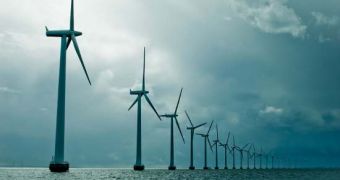A new paper published in this November's issue of the journal Environmental Impact Assessment Review documents the effects of offshore wind farm on marine mammals.
Thus, scientists in the United Kingdom and the United States say that, according to their investigations, such farms not only affect the behavior of marine mammals, but also cause them to get injured.
As detailed on the official website for the University of Maryland's Center for Environmental Science, the specialists reached these conclusions after monitoring marine mammals living in areas in the North Sea where several offshore wind farms are currently under construction.
The researchers chiefly focused on harbor seals and found that the noise produced by offshore wind farms, especially during the construction phase, can cause these marine mammals to suffer severe hearing injuries.
Such injuries are bound to make them more vulnerable to predators and make it more difficult for the seals to communicate with one another.
It can also happen that, if they are swimming too close to the construction area, the seals die.
What's more, the scientists argue that the noise is likely to cause the seals to flee to other regions, meaning that both their feeding and their breeding habits stand to be disturbed.
According to Helen Bailey with the University of Maryland, it is likely that the findings of this investigation also hold true for other marine mammal species such as dolphins and whales.
“Pile-driving during the construction of offshore wind farms produces an incredible amount of noise. This is potentially harmful to marine species and has been of greatest concern to marine mammal species, such as protected populations of seals, dolphins and whales,” Helen Bailey says.
The researchers expect that their findings will serve to lower the environmental impact of offshore wind farms.
Specifically, they hope that they will help engineers develop better ways to erect such farms without disturbing marine wildlife, especially in US waters inhabited by endangered species such as the North Atlantic right whale, the humpback whale, and the fin whale.
“Our framework takes a worst case assessment of the short term impacts of noise and how these may influence longer term population change, thereby providing information that allows regulators to balance their efforts to meet both climate change targets and existing environmental legislation,” study leader Paul Thompson with the University of Aberdeen explains.

 14 DAY TRIAL //
14 DAY TRIAL //